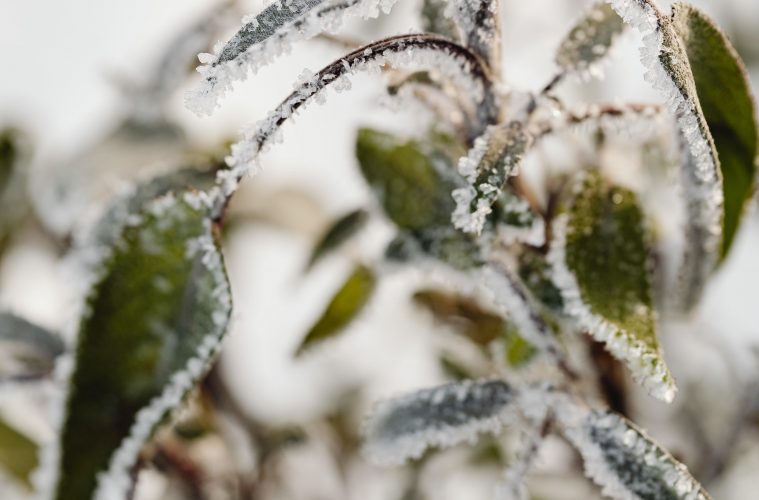Gardeners from colder climates have experience in choosing the right frost-hardy plants for their gardens. But sometimes, a gardener just loves a plant so much that they have to give it a go – even if it may not survive in a frosty climate. There are also many edibles that will not do well with frost and will need protection to produce crops. Luckily, there are a few ways to stop frost from killing your precious plants.
4 Ways to stop frost from killing your plants
Frost Protection Fabric
This cloth (or fleece as its sometimes called) can be bought by the meter in garden centres to cover vulnerable plants at night. To avoid any contact with the plants like vegetables which may cause the plants to burn, its best to place the fabric over wire hoops or stakes. You can leave the fabric in place until the threat of frost has passed, or preferably, open up the fabric for an hour or so in the morning to allow the sunlight in.
You can also keep an eye on the weather and only cover vulnerable plants when there is a chance of frost. It usually occurs when temperatures are zero or below zero, but this also depends on dew and wind. A light wind may even prevent frost, but a very cold wind can cause black frost which will be deadly for some plants.
Tunnels and Greenhouses
Plastic laid over wire or plastic hoops can also help prevent frost damage. They can be fitted simply by bending poles in hoops, securing the shape into the ground and laying plastic over the top secured with cable ties. These will act like mini greenhouses which can the be dismantled in the warmer months.
The greenhouses also allow vegetables that are more dormant in winter to flourish and continue producing crops. They also allow seeds to be sown and protected before the warmer seasons arrive. If the weather is severe, it’s best to invest in a permanent greenhouse to move all vulnerable plants when the cold weather comes along. You can even plant any tender plants in containers to move into a greenhouse or indoors during winter.
Keep Beds Warm
In some cold areas, a lack of sun means that some flower and vegetable beds are left to rest. If you are practising crop rotation, this time allows the soil to lie fallow before spring planting. However, its important to not allow the soil to freeze by adding a generous layer of organic mulch like compost or well-rotted kraal manure over the bed.
This allows the soil organisms to still do their work under the ground so the bed is ready for planting in spring. If the weather is not very cold in your area, try growing a cover crop like mustard that is fairly frost hardy. This will increase the nutrients when its dug into the soil before planting other crops.
Reduce Plant Stress
Stressed plants are more likely to succumb to attacks of frost than healthy plants. In winter, the soil life will reduce significantly so its best to foliar feed the plants to improve resistance to the cold. In summer-rainfall areas when there is little rain in winter, avoid overwatering which can lead to pests and diseases. Overwatering and underwatering causes stress which makes plants less frost resistant. Mulching also helps keep the roots of plants warmer and more frost tolerant.
ALSO SEE: How to transplant roses
gardenandhome.co.za/gardening/how-to-transplant-roses/


